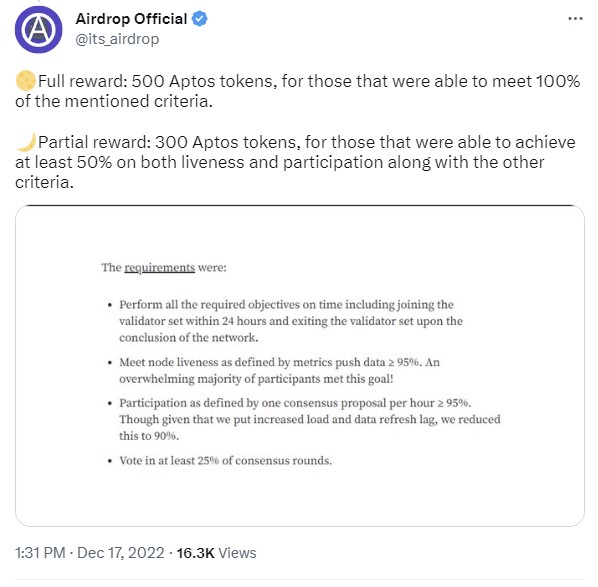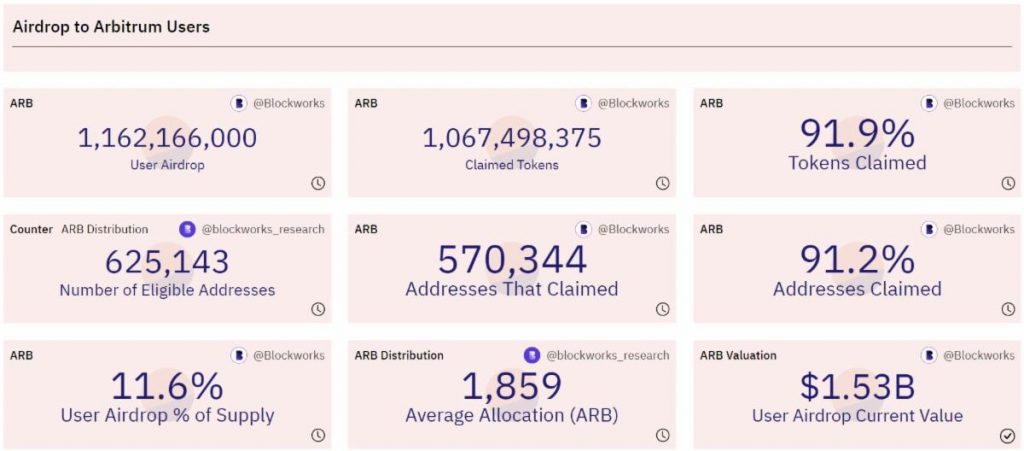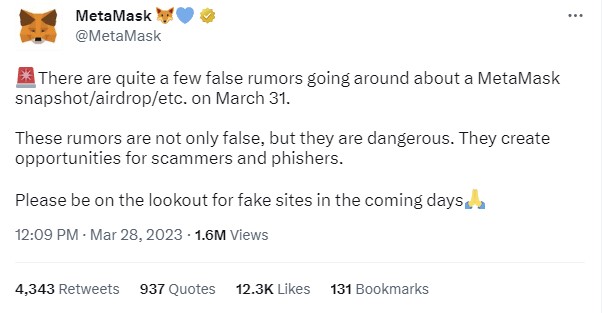
Our Premium members compose an expert community of investors. We’ve proven that with the survey we conducted last June. It showed 93.1% of our readers at the time as owning crypto, and the average portfolio size was a huge $1,000,000!
While this number is skewed somewhat by a few whale-sized wallets, the median portfolio size was still $19,000. Even with the crypto winter, most of our Premium readers already hold a variety of cryptocurrencies (often in substantial amounts).
So, you might wonder why I’m writing about how to get free crypto today.
One reason is that it IS free. There’s no harm in filling your bags with some free coins if it’s not too time consuming. Adding these free tokens can also help in further diversifying your portfolio.
However, there’s an even better reason: many of these methods also help the overall crypto community. They can increase protocol usage, help uncover potential bugs and defects within the protocol, and serve as educational tools. Plus, they can be fun and rewarding.

How You Can Help the Crypto Ecosystem (and Get Paid)
There are several activities that help make the crypto ecosystem better. Some are on a strictly volunteer basis like helping with open-source coding or becoming a project ambassador. Others will reward you with tokens. Here are a few worthy projects to consider.
Run a Node
Most modern blockchains run consensus mechanisms that allow anyone with the necessary hardware to participate in the consensus process. These network participants are known as node owners, and they run special software that allows nodes to interact with blockchains, performing essential functions to maintain these chains, validate transactions, and ensure accessibility.
The function of a node is tied to its type of blockchain. For example, nodes in PoS blockchains like Ethereum, Polygon, and Avalanche perform transaction validation and block production, while a decentralized storage network node (like in Filecoin and Arweave) might store file fragments, ensure redundancy, or provide bandwidth.
In return for the service provided by the node, the node operator is rewarded with tokens, either from new emissions or from fees collected by the network.
Of course, you’ll need to invest in the required hardware and choose a blockchain that doesn’t require nodes to also stake. For example, running an Ethereum node requires a stake of 32 ETH (obviously not free). However, running nodes for Solana and Cardano require no stake.
Instructions for spinning up a Cardano node: Text or Youtube
Instructions for spinning up a Solana node: Text
The amount you can earn will vary based on the activity of the network and your relative share of its resources, as well as the value of the reward token.
Join a Testnet
Testnets are created by blockchain projects specifically for testing purposes. The developers can find bugs and fix them before pushing things live to the mainnet. Participating in a testnet is generally free and only requires a user to download a client or wallet that’s specific to the testnet. In many cases, this involves adding the testnet RPC to a pre-existing Web3 wallet.
The activities performed on the testnet vary depending on the project, but they might include staking or mining, interacting with dapps, lending and borrowing, minting NFTs, and other typical transactions.
While there are no guarantees of returns, many projects will reward testnet users with coins or tokens on the mainnet once they go live. The Oasis Network and Aptos have been particularly generous to testnet users lately. The Aptos rewards were as high as 500 APT tokens (currently worth nearly $5,000).

The best way to become informed about incentivized testnet projects is by following project developers on social media channels. You can also learn about these projects from several of the online airdrop listing sites.
Look for Bugs
I don’t mean bugs like fleas or cockroaches. If you have some talent in debugging code, you might turn that skill into some free crypto.
While finding bugs might not be the easiest task, it can be particularly lucrative. The size of the reward is generally related to the nature of the vulnerability including its severity, risk level, and novelty. In some cases, the reward for finding and reporting a critical bug can count in the millions of dollars.
While the need for deep technical knowledge is required for most bug bounty programs, there have been some for non-technical users as well. These might offer rewards for uncovering or intercepting social engineering attacks or for offering feedback on the user experience.
Platforms like HackenProof, Immunefi and Bugcrowd can be used to search the range of available bug bounties. In addition, many individual projects advertise bug bounties on their websites or social media channels.
Look for Airdrop Opportunities
Airdrops are free token distribution programs designed to reward early participation in an ecosystem, diversify and increase the number of token holders, and increase the amount of buzz surrounding a project.
Many airdrops are speculative, but as the barrier to entry is low, they remain quite popular. They can also be lucrative. The recent Arbitrum airdrop saw 1.275 billion ARB tokens worth $1.68 billion airdropped to just over 570,000 addresses. Two addresses specifically were reported to have received $2 million and $1.4 million worth of ARB tokens, though the average drop was 1,859 ARB (worth roughly $2,500 at the time).

Most airdrops are available free of any conditions, but some require certain terms to be met. For example, the project might specify the airdrop for early adopters of its ecosystem. That could include providing liquidity, conducting transactions, or interacting with dapps. Note these activities will likely come with network fees, meaning the airdrop isn’t technically free (here’s one place you can learn about upcoming airdrops).
Exercise caution with airdrops. It seems scammers never sleep, and will look for any way to get their hands on your coins. Recently, rumors began swirling on social media of an airdrop from the popular Web3 wallet MetaMask, but these rumors turned out to be untrue (and potentially dangerous to users).

Be cautious with airdrop rumors. It’s best to look for confirmations from projects themselves, and never send coins or your private keys to participate in an airdrop.
Work in Crypto
If you’re ready to go all in, there’s no better way to get your hands on crypto than to get a job in the space. Many Web3 projects pay employees and freelancers in crypto (either in full or in part). Yes, you’re trading your time and work for this crypto, so it isn’t technically free, but all the above suggestions also involve trading some of your time.
Which crypto you’ll get paid in depends on the project, but BTC, ETH, or stablecoins are popular options.
If you don’t need the coins for immediate financial obligations, holding onto them could mean they’ll be worth significantly more in the future (this doesn’t apply to stablecoins, of course).
Finding a job in blockchain can be as easy as doing a Google search for “Blockchain Jobs”. Note you don’t have to be a programmer to get into a blockchain position. There are legal, accounting, social media, content production, marketing, sales, and customer acquisition jobs (along with others). Blockchains are businesses.
Get Free Crypto for Educating
You can get free crypto for educating others about the space, either through referrals or as an ambassador for a specific project. You can also get free crypto (albeit a small amount) for educating yourself about crypto.
Learn and Earn
To increase awareness and education around crypto, several major players have introduced “learn and earn” programs that pay users small amounts of cryptocurrency for learning about specific projects in the industry.

I believe Coinbase was the first to take this approach, but today, there are many more. As rewards generally run between $2 and $10, they aren’t worth much individually, but if you’re participating in several programs, they’ll add up over time.
Here are links to the most popular learn and earn programs:
Crypto Referrals
Referral programs, also known as affiliate programs, incentivize users to refer others to join particular crypto platforms. In return, referrers (and sometimes, the referred) receive rewards like sales commissions.
It’s easy enough to participate. Most crypto exchanges include unique referral links for registered users. Once you have such a link, you can share it with family and friends. You can also provide some education about the space and reasons why your friends and family should invest in crypto, increasing the odds they’ll sign up.
Two of the largest and best-known referral programs are:
Binance: The Binance Standard Referral program allows users to earn up to 40% commission on the trading fees generated by their referrals.
Coinbase: Coinbase has a very simple affiliate program that allows users to refer their friends, with both referrers and referees earning $10 rewards.
Become a Blockchain Ambassador
Blockchain ambassadors provide education for the broader community. They help to promote awareness about projects. They might be content creators (either written or video), or they might attend conferences to help promote projects.
If you’re considering being an ambassador for a project, you should believe strongly in it as you’ll need to immerse yourself in its goals, objectives, and ongoing updates. To effectively educate and promote awareness, you need to be an expert yourself, and you must be passionate about the project.
Cardano started its ambassador program in 2018, and it’s still going strong. Binance has a student ambassador program for those still in universities, and there are other ambassador programs for smaller projects and startups. Do a Google search.
Free NFT Mints
One final avenue to free crypto is through NFT free mints. This is when NFT projects give their creations away to users for free rather than charging. The free mints are typically done on a first-come-first-served basis, making it crucial to get in early.
In addition to the free mints, there are also several projects that will give away NFTs as incentives or through competitions.
Keeping an eye on new and active NFT projects is the best way to find out about free mints, competitions, and other user incentives.
Investor Takeaway
Investing on a monthly steady drip basis is the best way to build crypto wealth, but for times when you don’t feel comfortable entering the market, or if you want to help out the broader crypto ecosystem (and have some fun), there are ways to get involved and receive compensation for your time and effort.
Most of these free crypto ideas aren’t likely to make you rich, but they could help to make the crypto ecosystem a richer place. That alone makes them worth your consideration; take the free crypto as icing on the cake.

